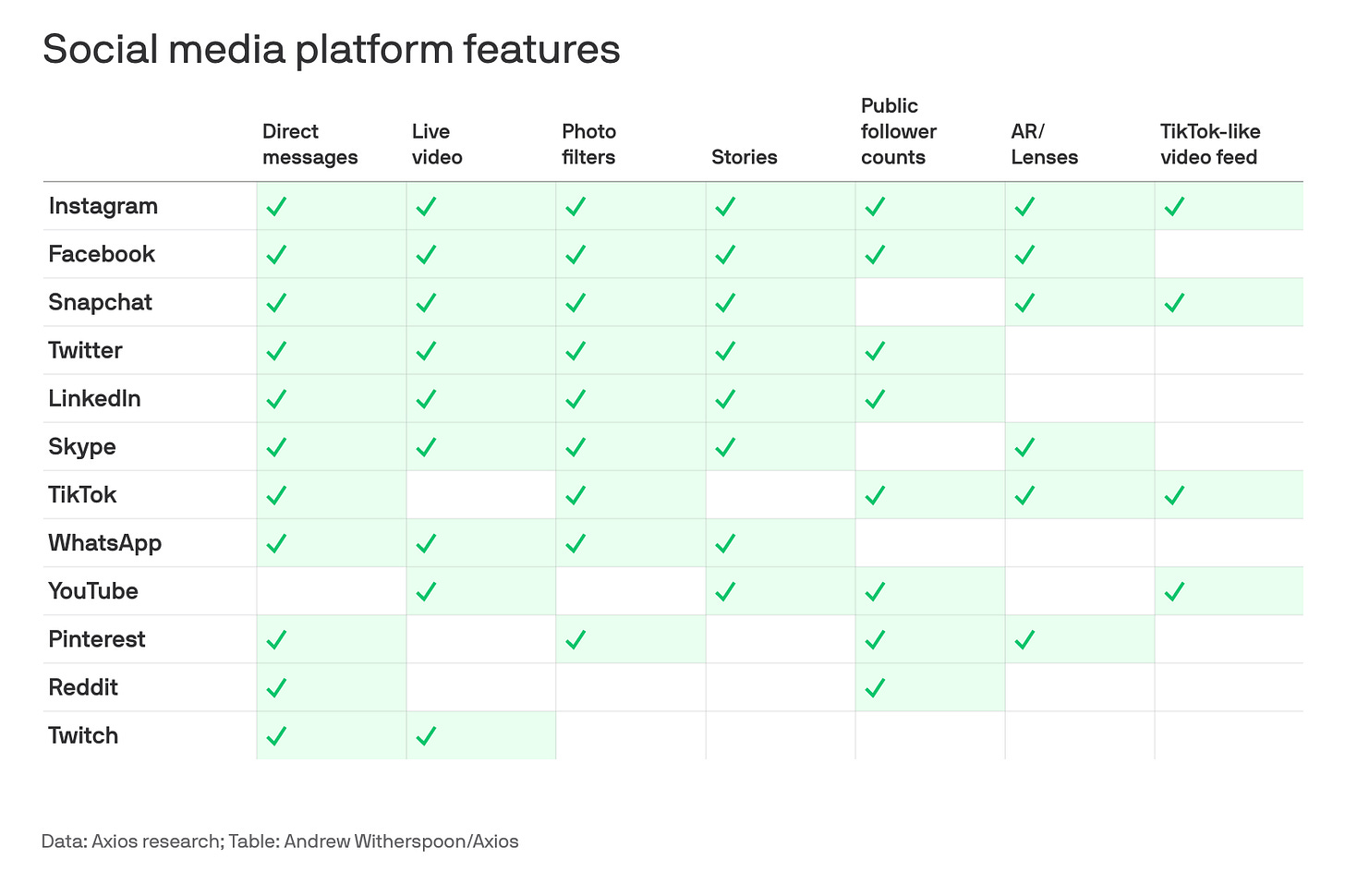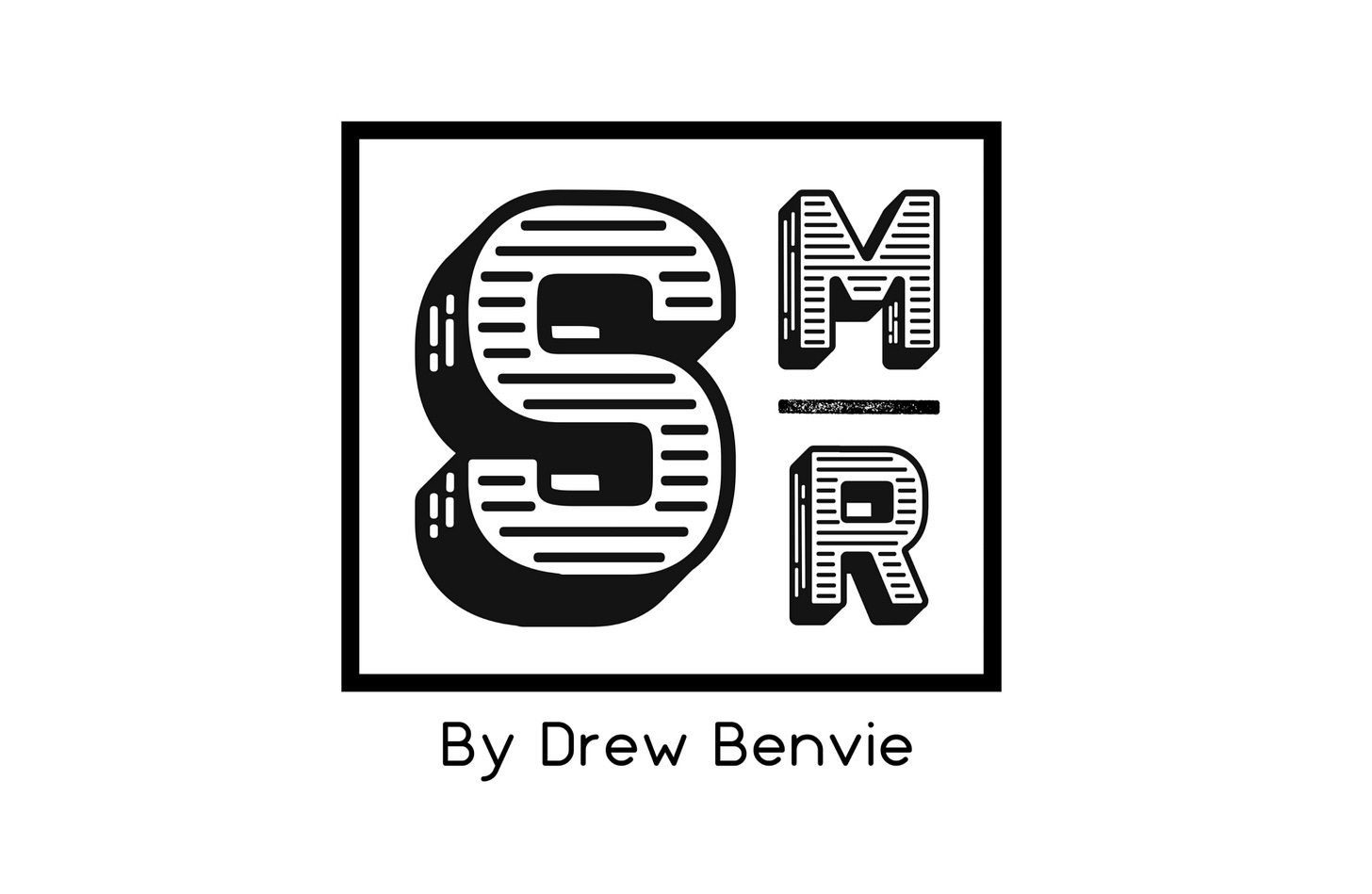The Social Media Report #8
A look at the week's news at the intersection of social media and society
Welcome to the latest edition of The Social Media Report, a review of the week’s developments in technology, digital and social media. In this edition we take a look at new features launched by Twitter and Snapchat, the world of work, social media legislation, and a rundown of my must reads from this week.
Subscribe below if you’ve been sent this, and you’ll get every edition soon as it’s out.
The week in review
With Twitter and Snapchat’s new features, social networks are approaching feature ubiquity. This week we saw Snapchat launch its new feature, Spotlight, its TikTok-like video browsing function. This is Snapchat’s play on changing what users see, by surfacing content based on its popularity, instead of it being based on who the user follows. Kind of like the ‘For You’ stream in TikTok. Remember back in August, Instagram launched its TikTok competitor, Reels. It seems all the big guns want a slice of the TikTok pie.
And while Instagram and and a Snapchat are busy copying TikTok, Twitter earlier this month launched Fleets, its copy of Instagram stories. Are you keeping up?
This game of of feature copying started in in 2016 when Instagram Stories launched. This was the first high-profile example of social networks brazenly copying each other's most popular features. And it has been happening ever since. Instagram Stories has been been widely accepted to be a direct copy of Snapchat, but since then, Facebook, WhatsApp LinkedIn and now Twitter all offer the same Stories functionality of posting portrait photos or videos which delete themselves after 24 hours. So where will it all end?
As noted by Axios in this nice piece of data journalism, the social networks are increasingly all looking the same. Chart and data are by Axios:
A key trend here is that social networks are all looking for new ways to hook in new users and to get people spending more time on their platforms, and they are doing it by offering features that users are going elsewhere to experience. What this is also doing is broadening the user base of each other social networks.
However, not in every case do these new features take. Largely because the functions are still new, Stories on LinkedIn and Twitter for example generally appear sparsely used out of kilter with the way the social networks look and feel day to day. Time will tell as to how well each social network fares with their copycat functionality strategies.
My must reads from this week
On to the most interesting stories that I have been reading this week.
Amazon had an outage this week: and it meant people couldn’t use their doorbells, vacuums or toasters.
Facebook pays $300 per person in facial recognition lawsuit: $650m in total paid out over biggest consumer privacy settlement in U.S. history.
Most Americans object to being tracked online: WSJ report into surveillance and society.
Comments under posts are the way people debunk false misinformation: NY Times finds from a study of boomer FB users that disinformation is flagged in the comments.
Facebook’s Libra currency coming in January: FT reports limited launch in the new year.
Legislation
New UK government Digital Markets Unit launches: to enforce a new code to govern the behaviour of digital and social media companies.
TikTok given a one week extension to sell off: December 4th is the deadline for the owner of TikTok to sell off its US business.
Inside TikTok’s legal battle: the lawsuit looked like a grass-roots effort, but was orchestrated by TikTok and parent company ByteDance, which sources say included orchestrating parallel lawsuits with star creators as plaintiffs.
£250m pledged to help UK companies remove Huawei: 5G wireless equipment in the UK must have Huawei technology removed by 2027.
A look at China's draft Personal Information Protection Law: South China Morning Post looks into how China’s ‘wild era’ of internet may be ending as new personal data protection law seeks to curb Big Tech’s control over user data.
The after effect of India’s ban of TikTok: local developers are scrambling to come up with the next best thing.
Work
Working from home is more dangerous than long hours in the office: HBR looks into impact of virtual work.
Amazon added 427,300 employees in 10 months in 2020: that’s 1,400 new employees per week.
A hacker is selling C-level exec Microsoft Office accounts: for between $100 to $1,500 a head.
Long listens and reads
The future of games: a podcast interview with the boss of Xbox, Phil Spencer: “gaming itself has gotten even more enmeshed in mainstream culture during the pandemic.”
Long read on TikTok content houses: this is a thing - houses filled with people who record their lives for social media. This article’s a great long read from The Atlantic which takes look into the rise of some of TikTok's stars, in particular Charli D’Amelio who has become the first creator to hit 100m followers on TikTok. The D'Amelios have been establishing themselves as the first family of TikTok.
And finally
RIP Tony Hsieh: one of the great founders of the internet era passed away this week. The Zappos former CEO contributed an enormous amount to the fabric of ecommerce and I’m buying his book after reading this.
The Social Media Report is written by Drew Benvie, founder & CEO of Battenhall, The Drum, CIPR and GDXA’s social media consultancy of the year 2020.
You can follow The Social Media Report on Twitter at @TheSMReport.
Thank you for reading. If you have any suggestions for stories you can email them to db@battenhall.com.
And if you know someone that you think would like to read this newsletter, forward it on by clicking Share, below.



